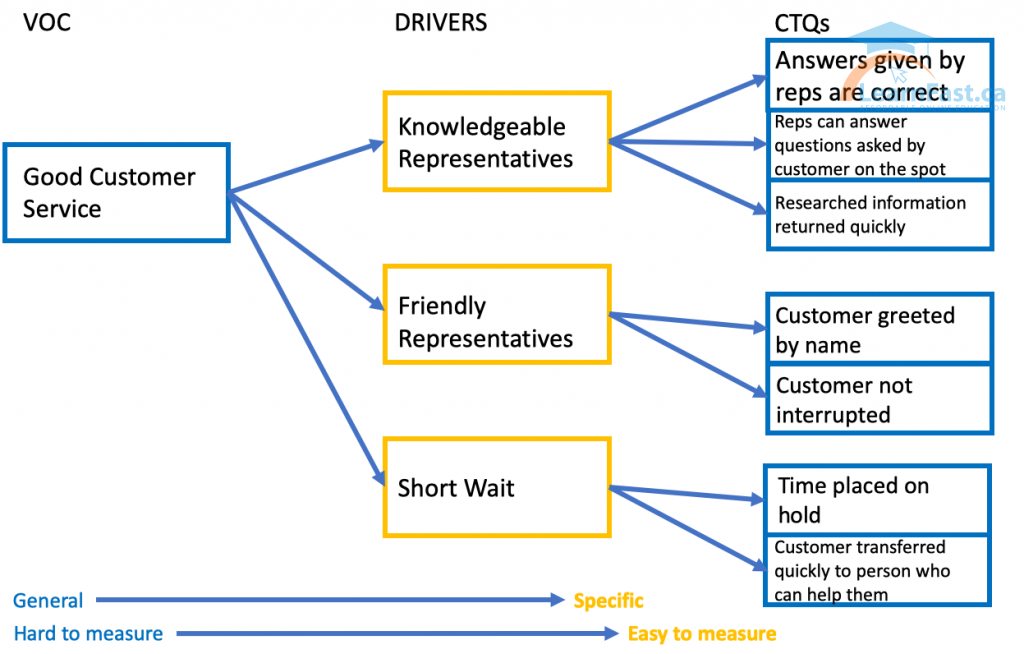Voice of the Customer
Customer focus drives such questions as:
- Why are we in business?
- Where do we need to be in the future?
- What is the source of our ‘Competitive Advantage’?
Customers align cross functional organizations:
- What drives purchasing behavior?
- What is a defect, what is Value?
Who is the Customer?
All end-users or recipients of the service, product, or process. The customer can be either internal or external. Examples of customer:
- Consumers of our products and services;
- Internal Functions: Sales, Marketing, Operations;
- Equipment, Machine or Computer System;
- Process step;
- Employees;
- Management;
- Anyone whose success or satisfaction depends on the performance of our process.
Customer needs
- The “Voice of the Customer” (VOC) is the qualitative or quantitative expression of the things that drive customer satisfaction;
- In a commercial setting, VOC is all those things that drive intent to purchase or repurchase VOC is the true customer voice – in the words of the customer.
Examples of VOC
- “l will buy the lowest cost product”
- “l am not satisfied with the speed of the service”
- “l don’t want to wait for too long to see the doctor”
- “l just want good service”
Sources of collecting VOC
Reactive Sources:
- Complaints;
- Problem or service hotlines;
- Customer service/support calls;
- Decreased, increased, or repeat business
- Contract cancellations;
- A web page or social media activities;
- Internal complaints, etc.
Proactive Sources:
- Interviews;
- Focus groups;
- Surveys;
- Sales visits/calls;
- Market research/monitoring;
- Benchmarking;
- Scorecards / Dashboards.
Understanding Customer needs
- Remember it is difficult to access and understand meaningful information;
- Customers tend to be vague;
- Customers do not always know their own requirements;
- Not all customer needs are equally important and can be met economically;
- Testing, probing, and further research is often required and ongoing.
- VOC needs to be quantified, converted into metrics that can be measured;
- Critical To Quality (CTQ) Metrics are the measurable elements of a product or service the defines customer satisfaction;
- CTQ Metrics allow us to:
- Avoid misinterpretation of the VOC;
- Identify key metrics;
- Understand the gap between the current and desired state;
- Validate the impact of improvement actions.
The CTQ tree
- “Critical To Quality” Tree/Flow down:
- A CTQ Tree is a tool that translates needs considered vital by the customer into product and service characteristics and links these characteristics to organizational processes.
- Generally, VOC is:
- Not measurable;
- Complex;
- Not specific.
- CTQ’s are:
- Measurable;
- Simple;
- Specific.
- Converting the VOC into measurable CTQ’s is a key step in the improvement journey.

Read more: KANO Analysis

















